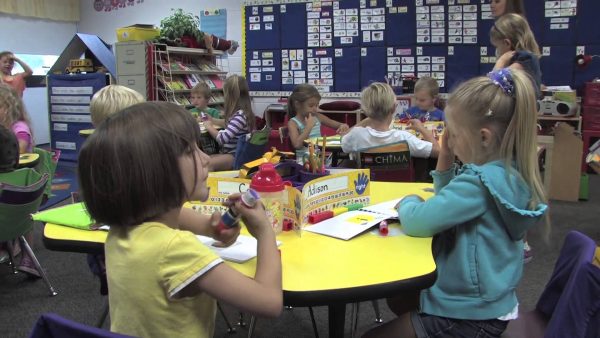A parent or teacher may want to assess what the child knows when it is time for a child to begin school.
A popular and reliable diagnostic tool routinely used to do this is the Kindergarten Readiness Inventory (KRI). A kindergarten inventory assessment gives parents and educators an idea of a child’s academic readiness and predicts whether a child will progress in the classroom.
Overview
Ideally administered at the beginning of the kindergarten year, the Kindergarten Readiness Inventory provides a quick measurement of skills possessed by the child before he or she enters school. It usually takes 10-30 minutes to complete and can be applied by a parent or the teacher. It is not a test that the student passes or fails. It simply gives teachers an idea of what direction to take when planning and supporting a child’s instructional needs. The inventory measures six or more areas of a student’s readiness and determine what skills a student may need to enhance.
Inventory Skills
The inventory composes of six main domains and the skills they incorporate. The domains include language, literacy, numeracy, physical, creative and social. Teachers can select which skills they will review, but there are common standards. For example, the numeracy domain skills determine a child’s ability to count to 10 while touching objects, measure objects, identify shapes and patterns, sort objects by attributes and understand sequences such as “before” and “after.” Social skills evaluates a student’s ability to engage in self-selected activities, interact with students, express feelings, ask for help and follow a schedule.
Scores
There are three inventory rating levels. The performance levels used to evaluate the six domains include Performance Level (PL) 1, 2, 3 or A, B, C. The ratings suggests whether the student is proficient, inconsistent or struggling with the skills in that domain. If a student is consistently having difficulties performing a skill they receive a score of PL1, which suggests that they are emergent and will need a large degree of instructional support. A child with a PL2 score will need moderate support, and one with a PL3 will likely succeed with only basic support.
How Will It Help?
Education is a personal experience, and it is important that each child gets the support he or she needs on an individual level. Taking an inventory of a child’s skills reduces performance anxiety in the classroom and gives teachers and parents an idea of each child’s strengths and weaknesses. Once teachers determines a child’s skill level, they can plan lessons and interventions that personally target that child’s needs.

